소개
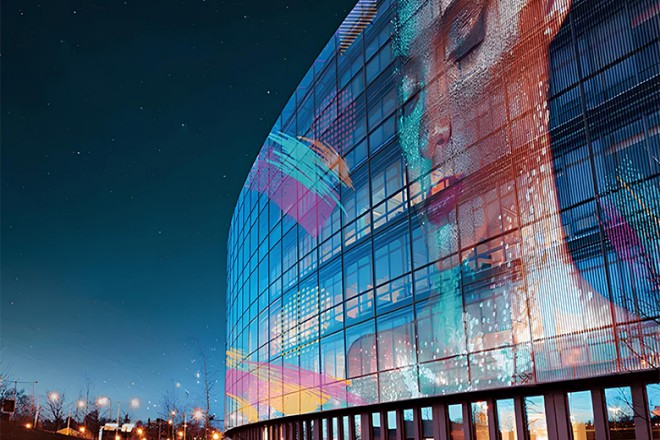
도시의 번화한 거리를 걷다 보면, 투명 LED 디스플레이 유리 커튼월에 내장된 스크린은 전례 없는 방식으로 시선을 사로잡습니다. 건물을 더욱 유연하게 만들 뿐만 아니라, 시각적으로 새로운 즐거움을 선사합니다. 하지만 이러한 스크린이 다양하고 복잡한 환경에서 어떻게 선명도와 밝기를 유지하는지 생각해 보신 적 있으신가요?
이 글에서는 투명 LED 디스플레이의 신비를 탐구하고 다양한 조건에서도 지속적인 가시성을 유지하는 기술을 소개합니다.
1. 투명 LED 디스플레이의 기술 원리와 특징은 무엇입니까?
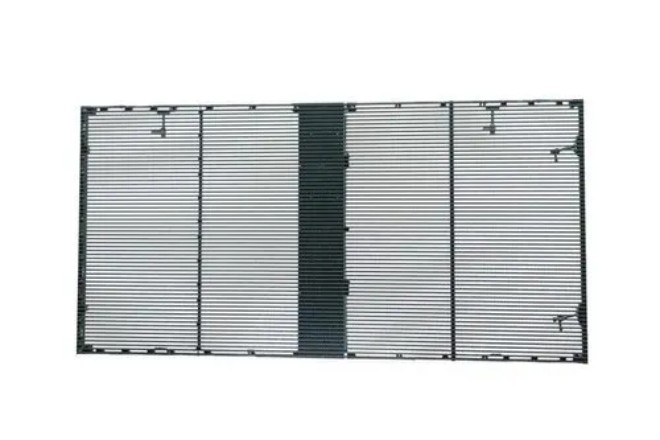
투명 LED 디스플레이는 LED 디스플레이 중에서도 특별한 유형의 LED 디스플레이입니다. 일반 LED 디스플레이와 달리, 무거운 상자가 아닌 속이 비어 있는 상자 형태로 제작되었습니다.
투명 LED 디스플레이의 가장 큰 장점은 투명도입니다. 투명도는 최대 70%에서 95%까지 높아, 화면을 표시하는 동안 시야를 거의 가리지 않습니다.
관객은 스크린 뒤의 풍경을 선명하게 볼 수 있습니다. 이러한 디자인은 공간의 개방성을 유지할 뿐만 아니라 투명 LED 디스플레이에 독특한 시각적 레이어링을 부여합니다.
투명 LED 디스플레이의 구조 디자인 또한 지혜로 가득합니다. 중공 구조와 평행한 조명 스트립 배열을 채택하여 구조적 구성 요소가 시야를 가리는 것을 최소화할 뿐만 아니라 화면의 투명성과 디스플레이 효과를 보장합니다.
동시에 얇고 가벼운 디자인으로 투명 LED 디스플레이는 다양한 환경에 쉽게 통합되어 건축물과 장식에 독특한 색상을 더해줍니다.
2. 투명 LED 디스플레이 화면의 가시성 유지를 위한 핵심 요소
투명 LED 디스플레이 화면은 실외 환경에서도 선명하게 보이는데, 이는 다음 8가지 핵심 요소와 불가분의 관계에 있습니다. 이러한 요소들이 함께 작용하여 화면이 다양하고 복잡한 환경에서도 최상의 디스플레이 효과를 발휘할 수 있도록 보장합니다.
1). 명도 그리고 대조하다
높은 밝기와 높은 대비도는 투명 LED 디스플레이가 야외 환경에서도 선명하게 보일 수 있는 기반입니다.
고휘도 LED 또는 OLED 기술은 강한 햇빛 아래에서도 화면을 밝게 유지하는 반면, 높은 대비도는 그림의 레이어를 강화하고 콘텐츠를 더 선명하고 구분하기 쉽게 만들어줍니다.
밝기와 대비를 최적화함으로써 화면은 야외 환경에서 최상의 시각적 효과를 표현할 수 있습니다.
2) 반사 방지 코팅
반사 방지 코팅은 화면 표면의 반사를 줄이고 화면에 나타나는 빛의 간섭을 줄여줍니다. 밝은 실외 환경에서는 반사로 인해 이미지가 흐릿해지고 가시성에 영향을 줄 수 있습니다.
반사 방지 코팅을 적용하면 이 문제를 효과적으로 해결할 수 있으며, 시청자가 화면의 내용을 쉽게 읽을 수 있도록 보장합니다.
3) 자동 밝기 조절
자동 밝기 조절 시스템은 주변 조명 조건에 따라 화면 밝기를 동적으로 조절할 수 있습니다.
이 지능형 조정 기능은 다양한 시간과 날씨 조건에서도 화면의 가시성을 최적화하는 데 도움이 됩니다.
예를 들어, 맑은 날에는 화면의 밝기가 자동으로 높아져 강한 햇빛에 대처할 수 있고, 흐린 날이나 밤에는 화면의 밝기가 낮아져 에너지 소비를 줄이고 시청자의 시력을 보호할 수 있습니다.
4) 안티헤일로 디자인
후광 효과는 야외 화면에서 흔히 발생하는 문제 중 하나로, 화면 가장자리에 흐릿함이나 후광 현상이 나타나는 현상입니다.
안티헤일로 디자인은 화면 구조와 광학 성능을 최적화하여 헤일로 효과의 영향을 줄여, 야외 환경에서 화면을 더욱 선명하고 또렷하게 보여줍니다.
이는 화면의 가시성을 개선하고 콘텐츠의 정확한 전달을 보장하는 데 도움이 됩니다.
5) 방수 및 방진 설계
실외 스크린은 종종 혹독한 기상 조건에 노출되므로 방수 및 방진 성능이 필수적입니다.
방수 설계는 비의 침투를 막아 비오는 날에도 화면이 정상적으로 작동하도록 보장합니다. 먼지 커버나 먼지 커버는 먼지 및 기타 오염 물질이 화면 표면에 달라붙는 것을 방지하여 화면을 깨끗하고 투명하게 유지합니다.
이러한 디자인은 모두 화면의 가시성과 내구성을 개선하는 데 도움이 됩니다.
6) 내열성
온도는 투명 LED 디스플레이의 성능과 수명에 중요한 영향을 미칩니다. 내열 설계를 통해 화면이 고온 또는 저온 환경에서도 정상적으로 작동할 수 있습니다.
적절한 방열 시스템과 소재를 채택함으로써 화면은 작동 온도를 효과적으로 제어하여 과열로 인한 성능 저하나 손상을 방지합니다. 이를 통해 화면의 가시성과 안정성을 유지하는 데 도움이 됩니다.
7) 자외선 차단 코팅
자외선은 디스플레이의 성능과 내구성을 저하시킬 수 있습니다. 자외선 차단 코팅은 화면을 자외선으로부터 보호하고 수명을 연장합니다.
동시에, 화면의 선명도와 색상 생생함을 유지하여 장시간 야외 환경에서도 최상의 디스플레이 효과를 유지할 수 있습니다.
8) 강화재
강화 유리나 고품질 플라스틱 소재는 물리적 손상과 충격에 견딜 수 있습니다.
이러한 소재를 적용하면 예상치 못한 상황에서 화면이 깨지거나 손상되는 것을 방지하여 화면의 무결성과 가시성을 유지할 수 있습니다.
특히 야외 환경의 스크린에 이 점이 중요한데, 야외 환경은 종종 더 복잡하고 변화하기 때문입니다.
3. 투명 LED 디스플레이의 지능형 제어 및 유지관리에 관하여
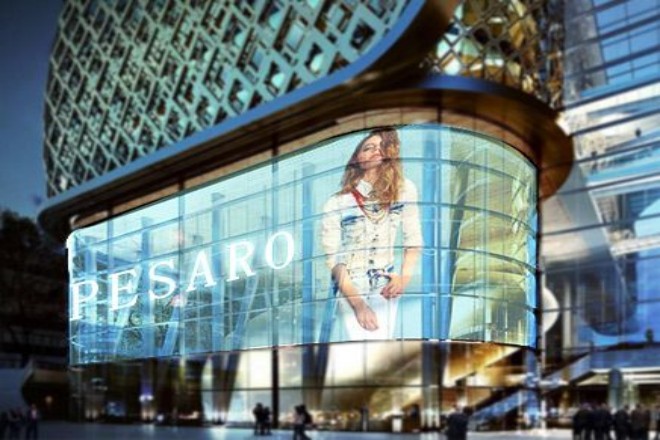
1) 지능형 제어 시스템:
투명 LED 디스플레이 작동을 더욱 간편하게 하고 싶으신가요? 통합 디자인을 사용해 보세요! 리모컨, 타이머 스위치, 조명 제어 등 다양한 기능이 통합되어 있어 클릭 한 번으로 모든 설정을 쉽고 편리하게 설정할 수 있습니다.
지능형 제어 시스템은 지속적으로 업그레이드될 수 있다는 점에 유의하세요! 새롭게 추가된 AI 지능형 조정, 환경 적응 학습 등의 기능을 통해 화면이 스스로 환경 변화를 감지하여 최적의 상태로 자동 조정하여 탁월한 디스플레이 효과를 제공합니다.
사용자 인터페이스 또한 시대에 발맞춰 직관적이고 사용하기 쉬워야 합니다. 명확한 작동 가이드와 피드백 메커니즘을 통해 초보자도 빠르게 시작하고 운영 효율성을 두 배로 높일 수 있습니다.
2) 원격 모니터링 및 유지 관리:
문제 발생 시 화면 관리를 아무도 해주지 않을까 걱정되시나요? 걱정 마세요. 원격 모니터링 시스템이 도와드립니다!
화면 상태의 실시간 모니터링: 이상이 발견되면 SMS와 이메일을 통해 즉시 알려주므로 언제든지 화면 동향을 추적할 수 있습니다.
빅데이터 분석을 과소평가해서는 안 됩니다. 화면 운영 데이터를 심층적으로 분석하고, 잠재적인 오류를 예측하며, 사전에 대비하고, 예상치 못한 다운타임을 줄일 수 있습니다.
원격 고장 진단 및 수리는 마법의 무기와 같습니다. 현장에 직접 가지 않고도 화면 제어 시스템에 원격으로 접속하여 대부분의 문제를 해결하고 시간과 비용을 절약할 수 있습니다.
물론 정기적인 유지 관리 및 관리도 필수적입니다. 화면의 장기적이고 안정적인 작동을 보장하기 위해 청소, 검사, 교정 등을 포함한 상세한 유지 관리 계획을 수립하십시오.
사용자가 직접 유지관리를 할 수 있도록 사용자 교육을 제공한다면 얼마나 좋을까요?
3) 콘텐츠 관리:
콘텐츠 제작 도구는 템플릿 라이브러리, 이미지 편집기, 비디오 편집기 등을 포함하여 완벽해야 하며, 이를 통해 제작의 문턱을 낮추고 콘텐츠의 품질을 개선할 수 있습니다.
지능형 콘텐츠 추천 또한 지속적으로 발전해야 합니다. 사용자 행동 분석을 기반으로 관심사에 맞는 콘텐츠를 추천하여 더욱 매력적인 콘텐츠를 제공합니다. 동시에, 콘텐츠는 자동으로 업데이트되어 최신 정보를 유지합니다.
야외 환경에서는 가독성과 인지도를 높이기 위해 콘텐츠 레이아웃, 글꼴 크기, 색상 대비 등을 최적화해야 합니다.
크로스 플랫폼 호환성도 고려해야 합니다. 휴대폰, 태블릿, 컴퓨터 등 어디에서나 콘텐츠 관리 플랫폼에 접속하여 콘텐츠를 관리할 수 있어 편리하고 빠릅니다.
간단히 말해, 이러한 최적화 팁을 활용하면 투명 LED 디스플레이를 더욱 지능적이고, 편리하며, 효율적으로 만들 수 있습니다. 한번 사용해 보세요!
4. 투명 LED 디스플레이 스크린의 적용 시나리오 및 솔루션
투명 LED 디스플레이 화면은 새로운 유형의 디스플레이 기술로서, 독특한 투명성과 높은 정의로 다양한 응용 분야에서 큰 잠재력을 보여주었습니다.
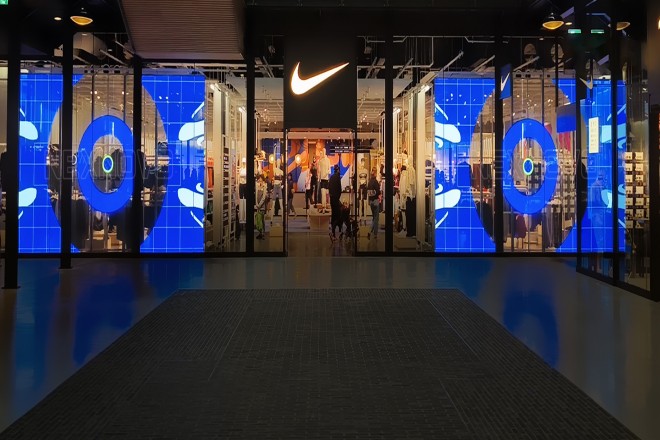
1). 상업 광고
- 응용 시나리오 설명:
투명 LED 디스플레이 화면은 상업 센터 등의 옥외 광고판과 매장 창문에 사용할 수 있으며, 뛰어난 시각적 효과로 보행자의 관심을 끌고 상인의 노출도와 홍보 효과를 높여줍니다.
- 해결책:
판매자와 광고 내용의 구체적인 요구에 맞춰 맞춤형 크기, 모양, 투명도를 제공하여 최대의 광고 효과를 보장합니다.
예를 들어, 매장 장식 스타일과 어울리는 특수 모양의 스크린으로 디자인하거나, 고객이 매장 내 상품을 명확하게 볼 수 있도록 투명도가 높은 스크린을 선택할 수 있습니다.
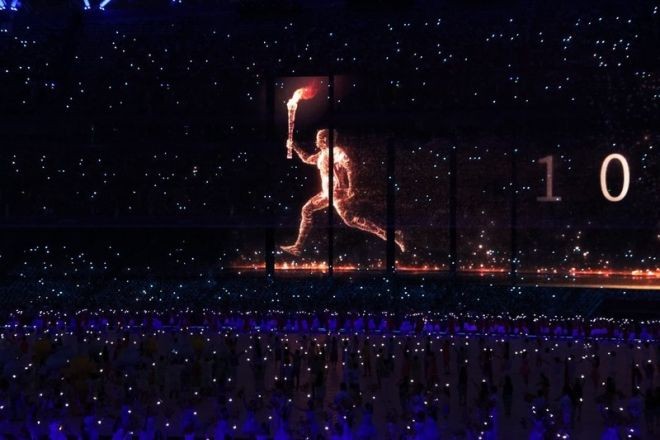
2). 단계 배경
- 응용 시나리오 설명:
대규모로 스포츠 이벤트, 콘서트, 콘서트 및 기타 활동에서 투명 LED 디스플레이 화면을 무대 배경으로 사용하여 게임 영상, 점수, 광고를 실시간으로 재생하여 청중에게 풍부한 시각적 경험을 제공할 수 있습니다.
- 해결책:
무대 크기, 형태, 공연 내용에 맞춰 맞춤형 LED 투명 스크린을 제공합니다.
예를 들어, 무대 형태에 맞는 곡면 스크린으로 디자인하거나, 강한 조명 아래에서도 선명한 화질을 확보하기 위해 밝기와 화질이 높은 스크린을 선택할 수 있습니다.
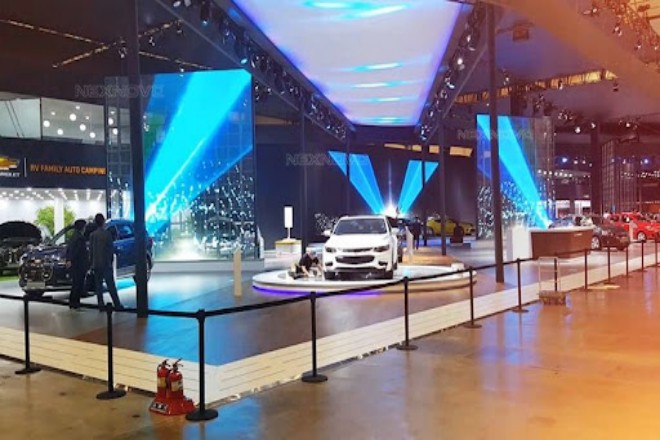
3). 전시회 표시하다
- 응용 시나리오 설명:
~ 안에 박물관, 전시장 및 기타 장소에서 투명 LED 디스플레이 스크린을 사용하여 귀중한 문화 유물, 예술 작품, 과학 실험 등을 전시하여 관객에게 새로운 시각적 경험을 선사합니다.
- 해결책:
전시의 주제, 내용, 공간 배치에 따라 크기, 모양, 투명도를 맞춤 설정할 수 있습니다. 예를 들어, 전시 공간과 자연스럽게 어우러지는 내장형 스크린이나, 관람객이 전시물을 명확하게 볼 수 있도록 높은 투명도를 가진 스크린으로 디자인할 수 있습니다.
결론
투명 LED 디스플레이 화면은 기술과 예술의 완벽한 조합으로, 독특한 매력으로 우리의 세상을 바꾸고 있습니다.
끊임없는 기술 혁신과 최적화를 통해 다양한 환경에서도 뛰어난 디스플레이 효과를 유지하고, 더욱 풍부한 시각적 경험을 선사합니다.
마지막으로 LED 디스플레이 화면에 대해 더 알고 싶다면, 우리에게 연락해주세요.
